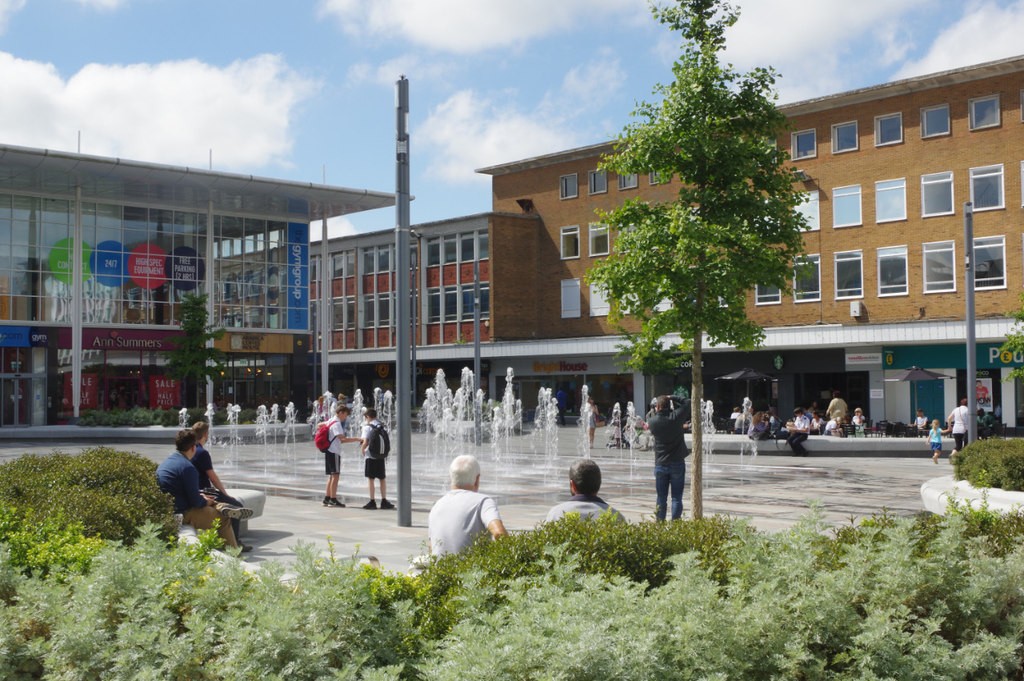
Why Must We Save the High Street?
I believe we should transform the high street. This is a classic example of transformation – we’ve been pushing for years to “save” something that is fundamentally broken, instead of transforming it.
Now that Britain’s high streets are opening up after the Covid-19 lockdown, how can local authorities encourage people to keep visiting once the initial rush is over? With central government spending up and consumer spending and confidence down, the high street is facing growing challenges.
It is only natural that online shopping has increased – according to ONS, about 30 percent of retail sales are increasingly conducted online. If you’re like me, you observed government guidance and you stayed home during the lockdown. In order to transform the high street, it is necessary to understand public sentiment around what people want their cities and towns to look like.
ONS: https://www.ons.gov.uk/businessindustryandtrade/retailindustry/timeseries/j4mc/drsi
The government has announced a further £50m in funding to support local authorities. Entitled the Reopening High Streets Safely Fund, the monies will help councils introduce a range of safety measures to help get people back to work and customers back to the shops. This funding is in addition to the £3.2b initially provided to councils over the course of the Covid-19 crisis.
This extra funding is allowing local authorities the freedom to help businesses reopen and ensure people can “enjoy their time visiting their local high street safely again.”
Since my departure from Granicus over a year ago, one of my passions is discovering and sharing new products and ideas, and applying innovative technology solutions to solve problems. I’ve spent the past year getting to know even more innovative, smart people in the “technology for good” sector.
These are all challenges organisations faced before Covid-19, and they are issues they now must face in a totally new reality. The obstacles local authorities must now address include communities that have been dramatically shaken: emotionally; financially; mentally – and yet, they must still try to “save the high street”. Shouldn’t they?
But why must we “save the high street?”
I believe we should transform the high street. This is a classic example of transformation – we’ve been pushing for years to “save” something that is fundamentally broken, instead of transforming it.
Imagine a pedestrianised high street with a distinct local flavour: quaint cafes, independent shops and boutiques, art exhibitions, floral displays, artisan and thriving cultural markets open to the public. In light of Covid-19, how will we maintain our two-meter distance and visit shops? Pedestrianise in certain areas while maintaining traffic flow around the town. Take Bristol, who plans to pedestrianise its historic centre, which includes restaurants, cafes, independent shops and Bristol crown court.
I am not saying it will be easy, transformation rarely is. It will require collaboration, planning, and creativity. And understanding true public sentiment. Too often we ask the public what they think with a paper poll or an online link to a survey and we get the same responses from the same people again and again.
One innovative way local authorities can creatively engage its audience, boost revenue, and increase consumer confidence when reopening in the coming weeks is through the use of a playful platform called Hello Lamp Post. Not only can this platform be used to garner dynamic feedback for consultations and surveys but it has the power to make the entire experience a whole lot more engaging. I believe Hello Lamp Post will become a permanent fixture on high streets up and down the country. It is a valuable engagement tool that has the power to become a fun, immersive digital experience that will entice people back to a transformed high street. Here is what you need to know…
Grab your phone and get ready to engage street objects! Hello Lamp Post is the multi award-winning, playful platform that empowers people to connect, engage and shape their city by chatting to street objects. In over 20 cities world wide, historic buildings, cultural objects, and businesses are paired with marketing collateral that explains how visitors and residents can converse with the local infrastructure via SMS – providing a phone number and reference code for each. I am particularly impressed by how Hello Lamp Post successfully engages the millennial and Gen Z audience to have their say in shaping local issues.
The system uses AI to question participants in a friendly, playful way, sharing their responses and stories with other visitors, adding an element of human-centric engagement, bringing the city or town to life. It has been successfully used in Belfast in an award-winning project to engage tourists along the Maritime Mile, and it has also increased engagement in cities and town globally.
These conversations take the shape of a friendly dialogue in which visitors and residents can learn about anything and everything from shopping, public health announcements, historic and cultural features, all whilst also providing their opinions and feedback to the Council. It’s a win-win. Read about how a local council has responded to the Covid-19 crisis and is using Hello Lamp Post to reach out to its vulnerable populations with a wellness programme.
I’ve been so impressed with the innovative team at Hello Lamp Post and the results they’ve produced that I’ve decided to invest in the company’s future.


Recent Comments